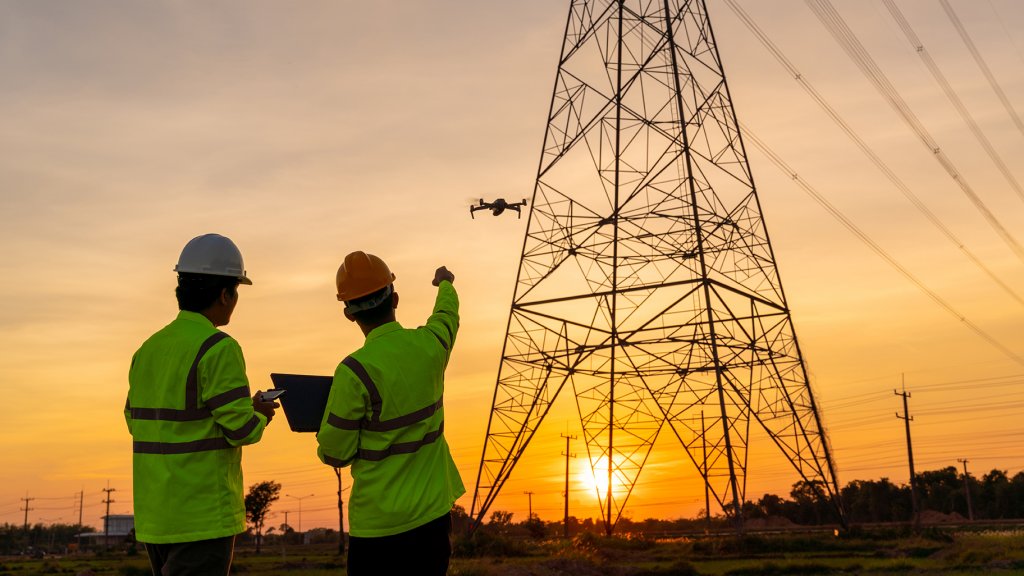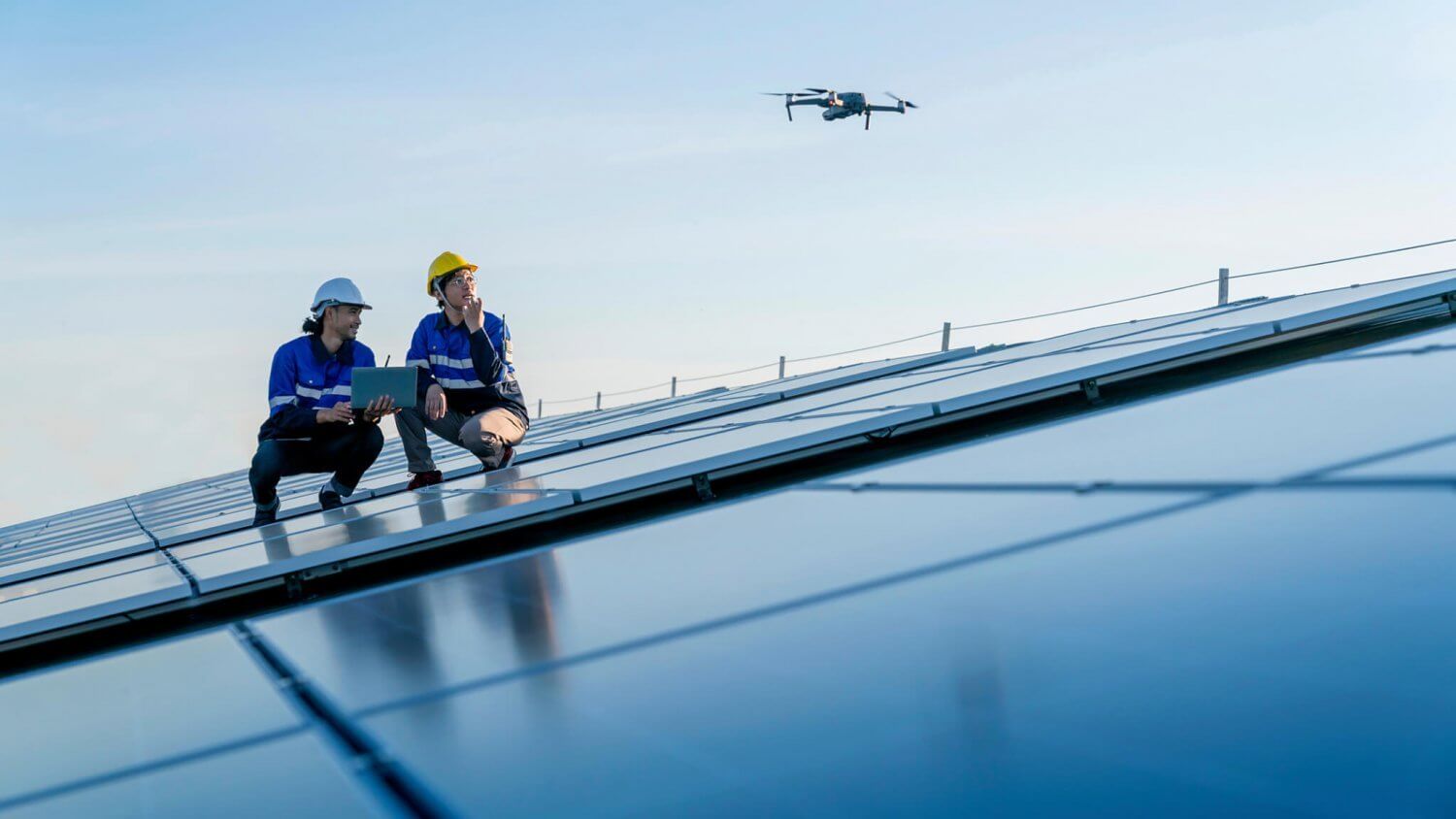Over the past decade, drones have taken the world by storm. They came as an anomaly, where no one knew quite what to make of them. Were they a hobbyist craft, the next iteration of remote-control aircraft? No, they were far more than that. Personal drones are proving to be one of the most versatile utility platforms that the world has ever seen. Drones have revolutionized how the realty industry displays and markets properties; seldom do you find a listing without aerial views. Artists use drones for sweeping views and panoramas, extreme sports, and extreme weather chasers, and the utility industry is catching the fever.
Drones are quickly becoming the most indispensable tool in the professional maintenance toolkit, putting eyeballs on items in minutes that might have taken hours in the past. So let’s look at which industries are buying into the drone hype for maintenance activities.
What Makes Drones So Great for Maintenance?
The maintenance industry represents an extensive market covering thousands of disciplines and tens of thousands of workers.
Drones proved to be the invaluable asset that maintenance professionals have been looking for. Why? Well, let’s take a look at what maintenance entails.
The most important part of the maintenance cycle is the preventative maintenance component. Visual inspections are the foundation of preventative maintenance, regardless of industry. Are you checking boilers? Visual exterior inspection. Airplane mechanic? Visual inspections are a daily requirement and are performed after every single flight. Power lines? Visual inspections are so necessary for this industry that they pay guys in light general aviation airplanes (i.e., Cessnas) to fly over hundreds of miles of powerlines to make sure they are up.
And let’s not forget one of the most apparent industries: roofing, especially after severe weather has moved through. If the hail was part of the storm system, there might be hundreds or even thousands of roofs that need to be visually inspected, which is time-consuming work. But consumer drones have taken this market by storm, freeing up countless manhours and providing a safer platform for conducting inspections than climbing on the roof. Also, some roofs have areas you cannot reach, and drones completely illuminate this issue.
Easy to Learn, and Easy to Use
Unlike relic remote-controlled airplanes and helicopters, drones are inherently stable aircraft. As long as you operate a drone within the manufacturer’s parameters (particularly wind limits), they are relatively fool-resistant. The commonly used consumer drones (DJI, Yuneec, Parrot) have a return button, and software updates have made them so they cannot even operate inside off-limits airspace (within five nautical miles of a public airport, security areas, etc.)
The hardest part of learning to operate a drone is the Part 107 written exam, which is not altogether different from the private pilot exam. However, several reputable schools offer curricula to help students with no experience pass the exam.
They’re (Relatively) Cheap!
It’s easy to look at a higher-end drone, like the DJI Inspire 2, which ranges from around $5,000 to $8,000 or more depending on the camera kit and think, “that is not cheap!” Well, it is. First, this is a very high-end drone beyond what is necessary for inspection work. The DJI Mavic 2 is adequate for most inspections, and it is well under a grand now.
But let’s think about manhours being replaced. One industry we didn’t touch on before is the wind turbine industry. Wind turbine blades are on an annual basis at a minimum, and this involves a lot of climbing to inspect each blade. One assessment of the inspection duration is 15 minutes for a drone inspection for one wind turbine tower and one full day for it to be done manually. So that drone, even an expensive one, quickly pays for itself in one or two sessions with that kind of time savings. In addition, there is no need for a team; the drone fits in a backpack, and a single person can knock out an entire wind farm in a day or two.
Drones Are Adaptable and Modifiable
What makes drones such a powerful tool in the maintainer’s arsenal is their adaptability. The best description is “it’s not a remote-control aircraft; it’s a smartphone with wings.” Drones are a platform for the mission rather than the mission itself.
The most common platform for drone work is imagery. Every drone is equipped with a camera, making this a natural employment of a drone’s capabilities. What makes the drone adaptable is its ability to carry a wide range of different cameras for different purposes, including a slew of conventional cameras, infrared cameras used for all kinds of industrial purposes, and even by fire departments for finding hot spots in fires.

Drone Use by Industry
Drones have only begun to scratch the surface of their usefulness and have been employed by some industries for regular use. Here are some of the most prolific.
Aviation & Aerospace
Using a drone to inspect another aircraft may seem odd, but drones are fast becoming one of the most favorable ways to conduct exterior inspections of large aircraft. Why?
During inspection cycles where the aircraft is undergoing major maintenance (the A, B, C, and D checks), it receives an extensive visual inspection covering the entire skin of the aircraft, all the way up to the tip of the vertical stabilizer on the empennage. As you can imagine, this is extremely time-consuming, especially on the large, heavy jets that have thousands of square feet of surface area.
Another critical reason drone inspections of large jets are the wave of the future is the ability to program the inspection routes over the aircraft, ensuring that every square inch of the skin is inspected. This feat is all but impossible to guarantee with physical inspections. Also, the entire inspection is chronicled, allowing far greater precision in determining when damage may have occurred; you have a hard baseline date and time established with every recorded inspection by a drone.
The Utility Industry
The utility industry might be the most prolific user of drones for maintenance inspections.
- Solar energy employs drones extensively to inspect solar farms. Solar farms are enormous, sprawling energy centers, covering ten to one hundred acres. Covering one hundred acres by foot to physically inspect each panel might take two or three days. In contrast, a single technician can conduct the entire inspection aerially in an hour or so.
- Drones are uniquely qualified vehicles for conducting inspections of confined spaces, namely boilers, ducting, etc. Confined space inspections are always hazardous by nature as they usually have high levels of toxic gases residually and low levels of oxygen. The only way to safely conduct them manually is with the buddy system, tying up at least two individuals for the duration. The level of risk is sharply reduced by using a drone, and it only requires one person. Confined space inspections are hazardous, averaging 92 per year. Drone inspections in this niche of industrial maintenance may be a literal lifesaver.
- Powerline inspections are proving to be a game-changer in the energy industry. The power grid is aging and is the cause of many wildfires when wind or lightning breaks lines or poles. The first line of defense is the routine inspection of all powerlines. As in, all of them. Millions of power poles and tens of thousands of miles of line. Traditionally, powerline workers have climbed the poles and inspected the critical areas, an excruciatingly slow process. Drones have changed all of this, allowing a single individual to inspect poles and lines very quickly, removing much of the tedium of the process.
The industrial maintenance inspection process is time-consuming and routinely dangerous. It requires exposure of workers to heights, confined spaces, limited oxygen, high voltage, and even noxious fumes. However, drones are doing away with considerable costs in manhours and are highly adaptable in all kinds of industrial environments. As Beyond Visual Line of Sight (BVLOS) advances through the legal process for routine approval, the usability of drones in the industrial space will continue to experience explosive growth.

